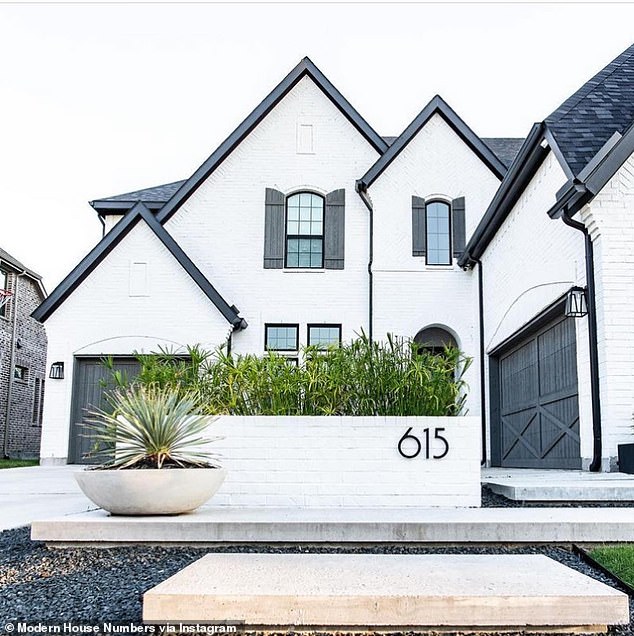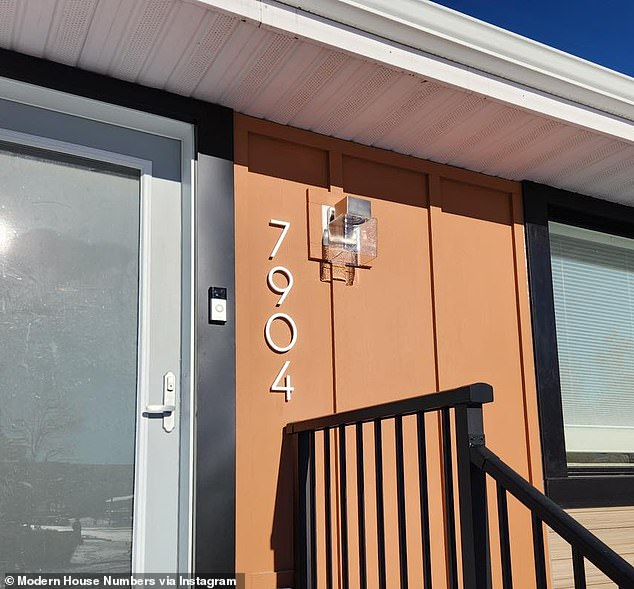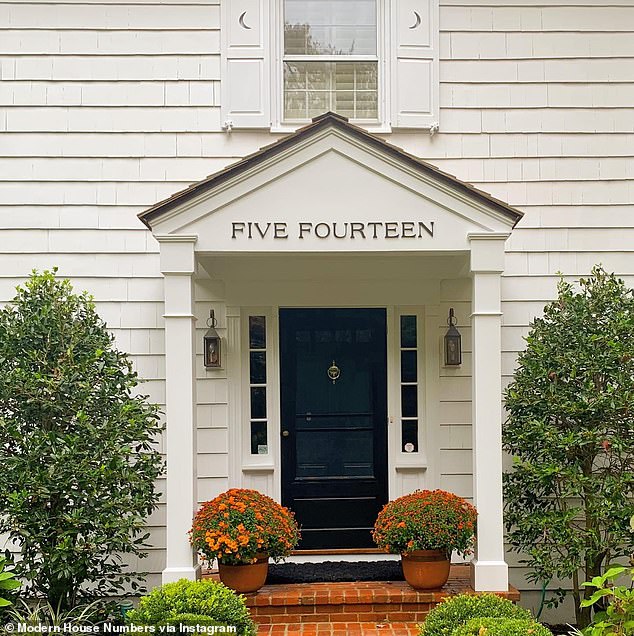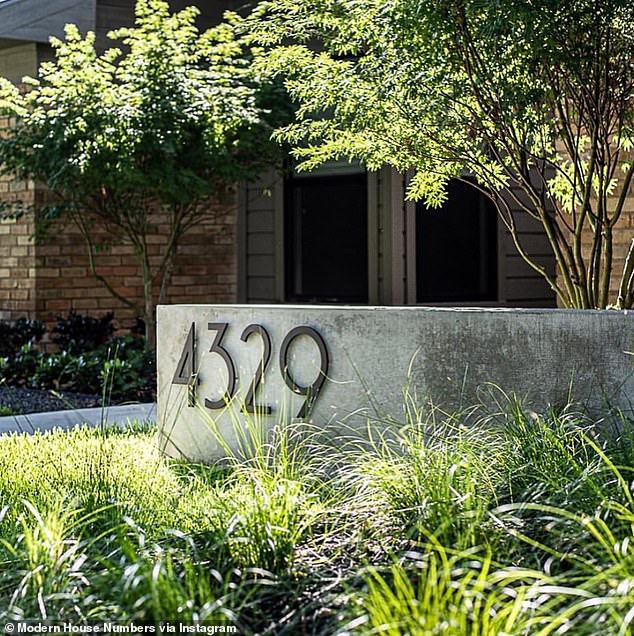Americans are now obsessing over HOUSE NUMBER styles – with ‘gentrification font’ Neutraface signaling that an area is on the rise and some homeowners even building walls just to display the digits
Americans are obsessed with their house number styles — with one font dubbed the “gentrification font” and another font inspired by Chip and Joanna Gaines’ post-popularity house makeovers.
The chic sans-serif numbering has become a telltale sign of a gentrified neighborhood on the rise, with some homeowners spending big to upgrade their entryways. A font called Neutraface has proven to be the most popular – and is even being parodied online.
‘(House numbers) start the story: Who is this? What does this say about the people who live here?’ designer and visual communications expert Renee Stevens said The Washington Post.
“What they do, in addition to their function, is they add personality.”
Homeowners are turning to chic house numbers to add personality to their properties. This font is Neutraface, which is also called the “gentrifier” or “gentrification” font because its appearance in an area indicates that it is on the rise

A sleek ‘sans-serif’ font – with the serif line removed for a no-nonsense look – has become a favorite among homeowners in recent years
While many may not have given their house number a second thought years ago, the latest fixation on home improvements appears to have been fueled by the pandemic.
As Covid-19 restrictions kept homeowners indoors, it became increasingly important to tailor your property in terms of landscaping, beautiful doorways and lighting – a new niche often referred to as ‘curb appeal’.
While it may be too expensive for some to buy a new door, DIY upgrades have become a popular pastime during the lockdowns – a trend that shows no sign of ending.
“People were looking for ways to update their homes that wouldn’t cost a lot of money,” said Allison Vaccaro, founder of the exterior design firm brick&batten, noting how she saw an uptick in house number sales when the pandemic hit.
She added that people were seeing that upgrading their standard house numbers with something more stylish was seen as an easy way to ‘make a big difference with an attractive appearance’.
While some are touting house numbers as an affordable way to make more money in the housing market, more expensive alternatives are just as in demand, with the most expensive being on the housing market. Honestly come to $257 per letter.

Neutraface (seen here) has become known as a ‘gentrification font’ thanks to the preference of homeowners looking to add a touch of opulence to their entryway
When it comes to the numbers themselves, a clean and calm font seems to be king. Sans-serif numerals – which remove the ‘serif’ movements from the ends of letters like f for a neater look – can now be a sign of opulence.
Neutraface, a new style of sans-serif numbering, has even been dubbed “gentrification font” thanks to its prominence in up-and-coming neighborhoods across America.
This is especially useful for those who want to stamp their personality on their property but don’t have the luxury of building a new home.
‘You could use house numbers to tell the world: ‘Yes, I may live in this colonial area, but I’m not. My personality is modern,” Vaccaro said.
This sentiment was echoed by Will Zhang, director of design and product innovation at decorative hardware company Emtek, who said house numbers are used by developers to give a house a fancy look when they flip it.
“These older neighborhoods are being gentrified and redeveloped, and one of the first things you notice is these modern house numbers are going up,” he said.
He added that some are even taking to spelling out their property numbers, such as FIVE FOURTEEN over 514, a less practical version of the original that Zhang said “speaks to the fact that people want their home to be unique.”

The trend has led to some properties typing their house numbers, a less practical version that experts say “speaks to the fact that people want their homes to be unique.” This old-fashioned serif font is similar to the font made popular by HGTV stars Chip and Joanna Gaines

Developers have started building additional walls for the sole purpose of displaying a swanky new house number
The urge to slap a fancy new number on a house has led some designers to expand their horizons, with Neutraface becoming something of a middle-ground option.
Vaccaro said the swing has led her to spice up her designs and adjust the typography to help people stand out from the crowd.
“Everyone did exactly the same modern sans serif – very clean, very simple,” she continued, saying that she had instead opted for a traditional mid-century style, such as replacing oval zeros with round zeros.
“For us, it was more about differentiating that look because it became so overcrowded.”
Personalized house numbers are a marked shift from the cookie-cutter font of decades past, when entire streets would opt for the same number and not look at it a second time except to try to find the right house.
The only US Postal Service regulations state that they must be larger than one inch, but Vaccaro says larger numbers up to six inches are coming into fashion – probably more to add to the specific style than to draw attention. pay attention to readability.
She said this has led to some developers building a whole extra wall outside some properties for the sole purpose of showcasing a new fashionable house number.
“You can do a whole landscape positioning and uplighting on a number placed on a wall,” she added.
‘The house numbers are getting bigger and bigger. It’s not just that they no longer live in the letterbox, they sometimes also have their own wall.’
